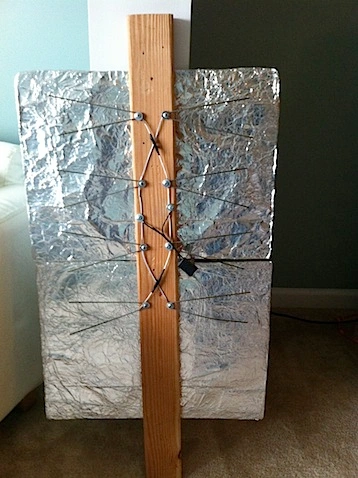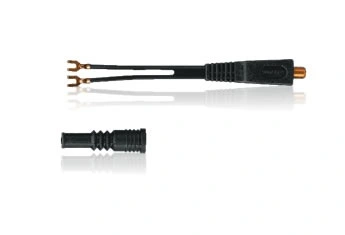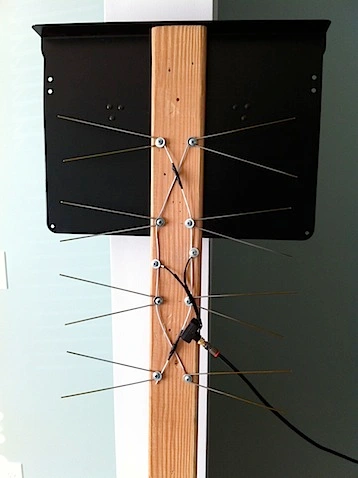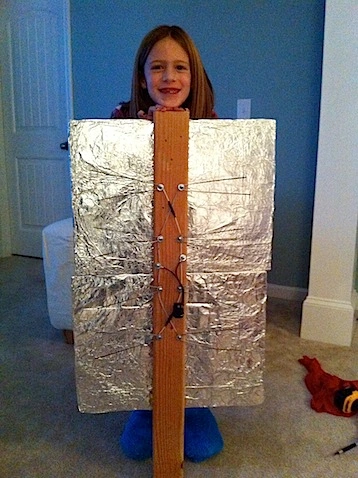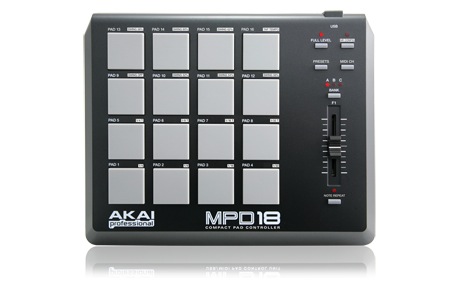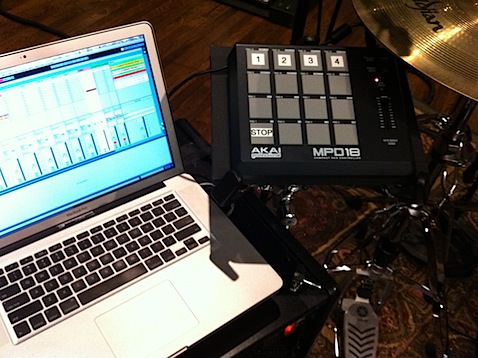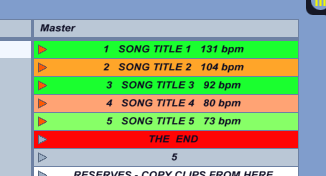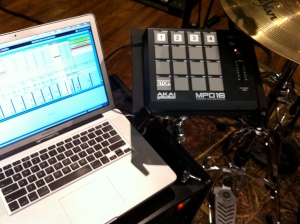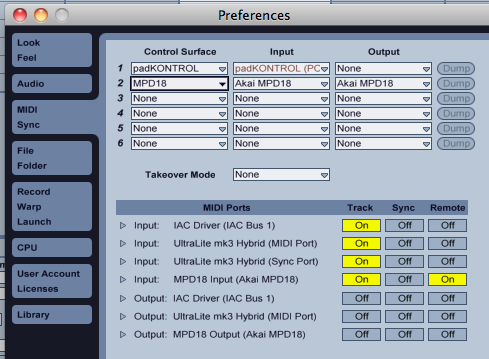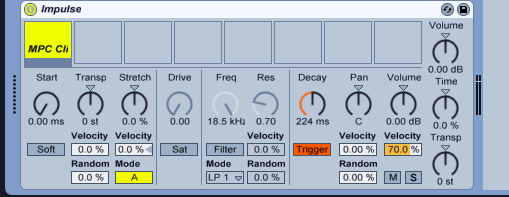By popular demand….
Here’s a look at our keyboard rigs at North Point, as of Spring 2014.
Most of our guys are now using a laptop-based mobile rig as their sound source. Computers’ power, stability and abilities have come leaps and bounds in the last few years, and the universe of sound palettes available via software synths are now seemingly endless and very affordable.
Behind us are the days of having to lug a bunch of keyboards to a gig, or being at the mercy of whatever hardware board was at the church or venue at which we were playing. Searching for sounds was a total pain, and ultimately limited to each keyboards capabilities. And switching sounds in the middle of a song set was a herculean feat.
With the onset and evolution of programs like Apple’s MainStage, and its subsequent sequels (like current version 3), the ability now exists for a keyboard player to have an almost infinite world of sounds carried around in his or her backpack. Really only limited by the power of their computer and the depth of their pocketbook.
And so here we are, in early 2014, where the average cost of a decent hardware 88 note keyboard is about $3,000(+/-). And for the same price, one can acquire a brand new hefty Macbook Pro and a copy of MainStage ($30) and maybe even a few third party sound source plug-ins, and be off to the races using an old, out of date hardware board as a MIDI controller.
And you can surf the Internet and check email too. 😉
So I can learn a set of songs and program & tweak sounds before I even arrive on stage.
And when I arrive, it doesn’t matter what building or stage or venue or part of the country it is – I only need them to provide a controller (or lug one myself), and plug into its MIDI or USB port. EVERYTHING else fits in my backpack: Laptop power cable, Audio/MIDI-to-USB interface, Akai USB pad controller, and a few appropriate USB cables).
And even if I’m playing in the East Auditorium at North Point (‘cause I work there…) where all those cables & stuff already exist, I can still program & practice using my laptop in the comfort of my office or at my keyboard at home.
OK, that said, here’s a look at our current set up:
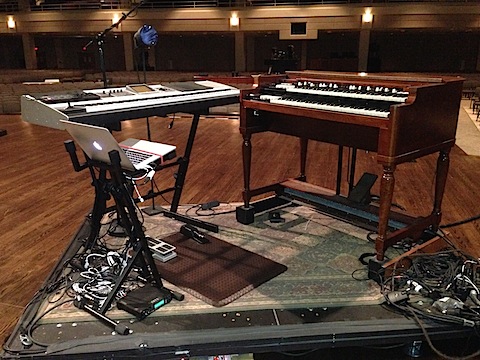
– Hammond B3 organ and Leslie. Yep, the real thing, circa late 1950’s. Can’t beat it. Take off the back cover and observe an amazing feat of analog electronics and spinning tone wheels. And stick your head in and take a deep breath: That’s 65 years of real wood, oil and vacuum tubes. It’s intoxicating.
She doesn’t get used quite as much any more due to evolving musical styles, but we’ll never get rid of her. The touch, the feel, the sound: It’s a love you never lose.
– Roland X8. All our campus stages bought one of these several years ago, as we liked the footprint, the internal sounds, the user-friendliness, ability to quickly switch patches via the Favorites feature, and the keyboard feel. It was also before laptop-based rigs became more popular, when folks were using the internal sounds, so having them on all stages helped eliminate as much learning curve as possible.
Now days, 99% of the time it’s being used as a MIDI controller for laptop rigs via its rear USB port.
BUT!! IMPORTANT: The X8 is also being used as the hardware backup to the laptop rig. Redundant redundancy!!!
Here’s the gist… While laptop rigs have come a long way, they are still not 100% reliable and fool proof. Trust me – I know from experience… The laptop rig, regardless of what software you use, can and will fail. Even if it’s reliable 99.99% of the time, the 0.01% time it fails will be when you need it most. Murphy’s law.
So…. we use a MOTU UltraLite Mk3 as the Audio Interface for the laptop rig, AND route the X8’s audio through it as well.
Therefore the MOTU is acting as a mixer (balancing the levels of the laptop sounds and the analog trim levels of the hardware X8), and no additional D.I.’s are needed for the X8.
Both sound sources are mixed and routed to the same Main stereo Outputs of the MOTU, and if you’re not using the internal sounds of the X8, you just keep the volume knob on the keyboard turned down. Super easy. So if the laptop freezes or dies or whatever, all you need to do is turn up the volume knob on the X8.
Or if you step on stage 30 seconds before you’re about to play the main piano part of “Faithfully” by Journey and realize that you forget to log in to your laptop and load MainStage after you restarted it after rehearsal, and the Producer is counting you down from “10, 9, 8, 7…”, all you need to do is turn up the volume on the X8 and play like nothing happened. No one will know except you and the Front of House engineer.
(Yeah, I did that. I was REEEEALLY glad I had a redundant hardware backup that day, and even a few times since.)
Obviously you don’t need a Roland X8. Any hardware keyboard with at least an internal piano sound will suffice.
– Wait, that’s it? Well, pretty much, yes. We’ve all but eliminated a second tiered keyboard from our East Auditorium rig simply due to the incredible versatility of MainStage. The ability to layer sounds, split keyboard zones within the software removes the need for a second synth-based keyboard.
Well, one more IMPORTANT Peripheral… I would not use MainStage in a live format without an external USB controller, like the Akai LPD8. It, or a device like it, is ESSENTIAL!
There are other similar devices on the market, like the Korg nanoKontrol, or even Behringer USB flying-faders mixer, that allow the rapid changing of patches and adjusting of levels (volumes, envelope filters, tap tempo, etc.). All those physical aspects are easily assignable in MainStage.
You can see an Akai LPD8 placed on the keyboard chassis above the low octave.
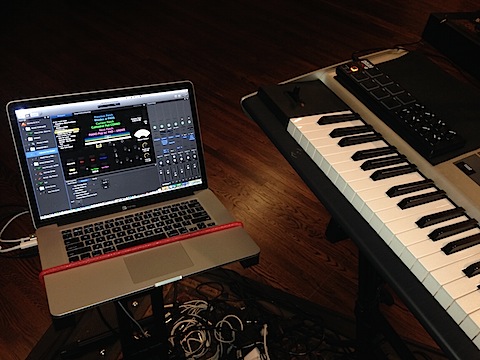
Our risers are on large casters and are moved backstage for the message. Hence the red bungee cord. I want my laptop to stay on the stand, not fall on the floor during riser transit. **Safety first, y’all….
– What’s on the Floor?
Well, lots of gack. Excuse the rats nest of power cables, audio snake, X8 audio cables, Firewire cord, USB cords & hub, 2 different laptop power supply types (new & old), mic cables & foot switch for my band leader/talkback mic, expression pedal, sustain pedal, and the MOTU.
Oh, and an anti-fatigue mat. ‘Cause a Sunday with 4 services and full rehearsals for 2 different sets of volunteer tech crew is a looooong 13 hours. And my feet were hurting. ‘Cause I stand. And you should too. ‘Cause only the drummer should be the only person sitting.
And while you’re at it, if you happen to have a real Hammond organ as part of your set up, I’d suggest building a 4” (+/-) riser for it. Having it at the right height when you stand and play makes it so much more fun to play!
– MOTU Notes:
Probably the biggest pain to set up was all the internal routing and level adjustment on the MOTU. Especially since its output is very hot when you use its balanced outputs.
We found this out when we started using an identical unit over at the drums position as an interface for our Ableton rig.
First, make sure your MainStage (or other software) is at the appropriate, unity levels. That’s kind of a no-brainer, but is worth repeating.
Now long story short, use the internal menus to do the following:
– Lower the output levels on the channels you want to use by at least 10dB. I found the easiest way was to slave all outputs (Main Outputs and any other analog outputs) to the Master level. Then you can adjust all outputs equally with just one knob. The terminology to the MOTU uses is “Monitor” on or off. On means yes.
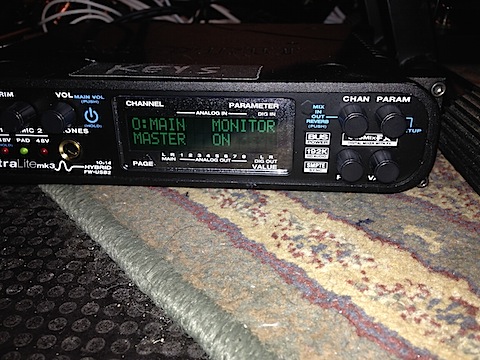
Now find a level of output that has your audio guy happy at FOH, with ample gain and some headroom to play around with. For us, that’s having the MOTU output down to about -10dB. That may then fluctuate a bit from player to player based on the levels of his or her laptop software.
The last thing to do is to adjust the input trim of the hardware board’s audio to match the laptop audio. Also, double check that its output channels are routed correctly.
For us, a satisfactory matching level was achieved by activating the -20dB pad and adjusting the trim up +12dB. (Basically -8dB overall).
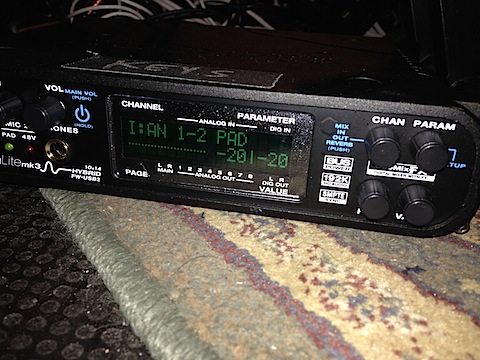
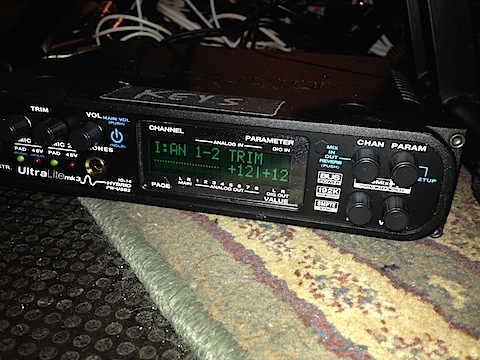
The reason that mixing these two sound signals at equal levels down the same set of channels is so imperative is so that if (more like WHEN) something does happen, all you need to do to correct the issue is simply turn up the volume knob on the hardware board. No frantic FOH person. No crazy levels. No accidentally muted channels. Just peace of mind.
Any questions?
